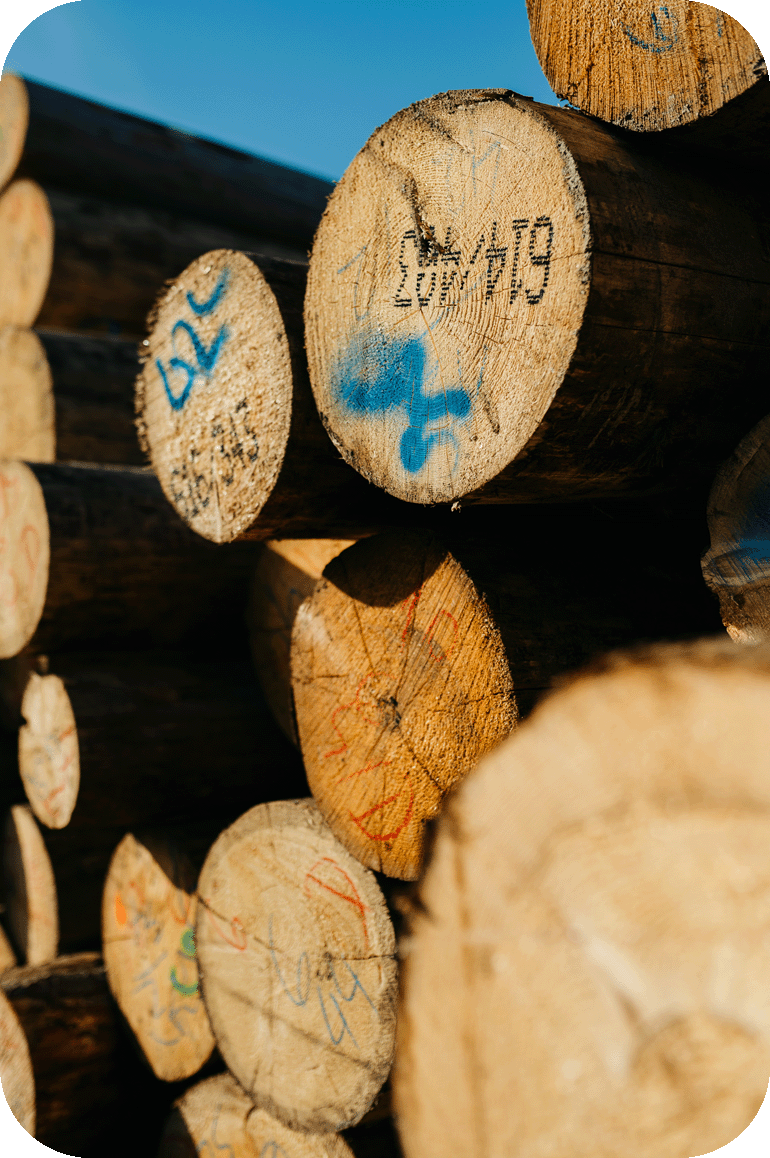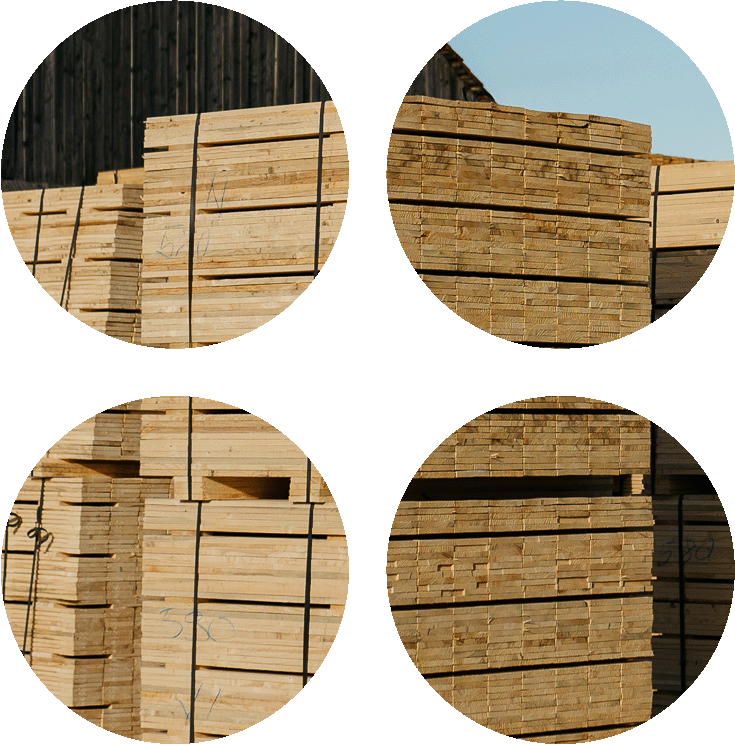04
Jurton continuously innovates and pushes the boundaries of sustainability. Our future is firmly connected to nature and the responsible processing of wood.
As reliable as wood
Throughout human history, those who mastered collaboration and adaptation have thrived.
Jurton operates in a commodity sector where deep product knowledge translates into expertise, enabling us to work with customers in the most efficient and professional way. The ability to identify processes and continuously improve them is the foundation of our communication with clients.

WHERE TRADITION, TECHNOLOGY, AND THE ENVIRONMENT MEET – RENEWABLE AND RELIABLE, JUST LIKE WOOD.
Today, Jurton boasts highly efficient systems and equipment designed for maximum performance:
- All machinery was installed within the last decade (2013–2023).
- Maximum log utilization to optimize raw material consumption.
- Automation at all stages of material handling to protect workers from physically demanding or repetitive tasks while optimizing machine cycle times.
- Major energy-intensive machinery is equipped with the latest-generation electric motors controlled by electronic systems such as soft-start and inverters, significantly reducing electricity consumption.

DOING OLD THINGS IN A NEW WAY: THAT’S INNOVATION!
J.A. Schumpeter
Let’s remember that wood is inherently an environmentally sustainable material. A recent study conducted by the Polytechnic University of Milan highlights significant environmental benefits related to greenhouse gas emissions and other impact factors such as land use and fossil fuel consumption. According to the study, the environmental impact of a wooden pallet is five times lower than that of a plastic pallet and is more reusable than a cardboard pallet.
These findings are further supported by a study published by Pennsylvania State University, which demonstrated highly favorable results for wooden pallets in terms of equivalent CO₂ emissions. The published data indicate that the lifespan of an EUR EPAL pallet significantly contributes to reducing the greenhouse effect. In fact, each wooden pallet removes a total of 18.4 kg of CO₂ equivalent from the atmosphere. On average, 1,229,432 tons of CO₂ equivalent are removed annually, with 108,893 tons accounted for in Italy alone.
Estimated Growth of the International Pallet Market
The global wooden pallet market reached a value of $57.6 billion in 2021 and is expected to grow to $75.9 billion by 2027, with a compound annual growth rate (CAGR) of 4.9% between 2022 and 2027.
The total number of pallets (both standard and non-standard) produced and/or repaired annually in Europe is estimated at approximately 1 billion, while in Canada, the USA, and Mexico, the figure reaches 4 billion. The standard wooden pallet market (EPAL) accounts for approximately 10%.
The primary driver of growth is the cost-effectiveness and reusability (though time-limited) of wooden packaging. Wooden packaging, such as pallets, significantly helps distribution centers optimize space usage. Additionally, wood is widely recognized as the most sustainable raw material for packaging production.
A potential risk factor lies in the fluctuation of wood prices, which account for 70% of packaging costs. High wood prices can negatively impact manufacturers’ liquidity, leading to increased costs for end users.
